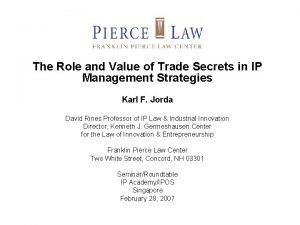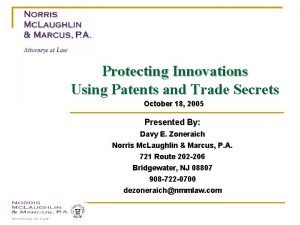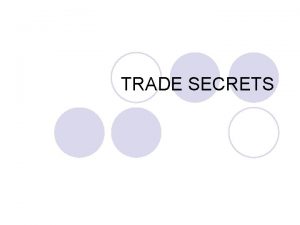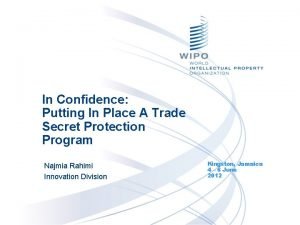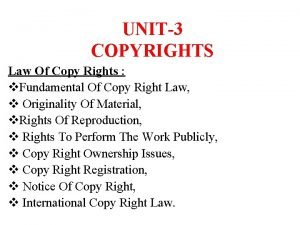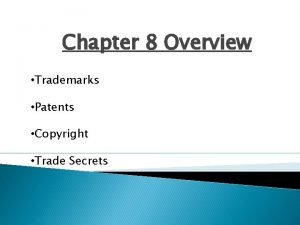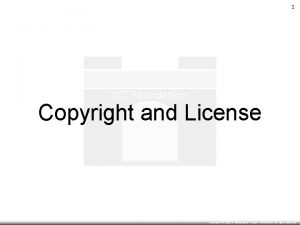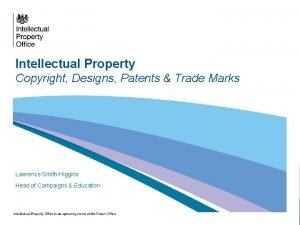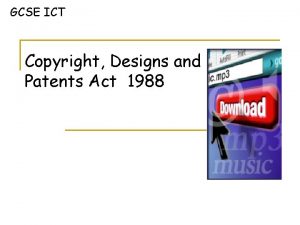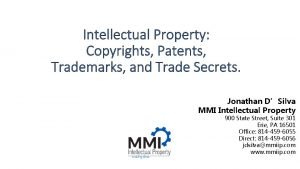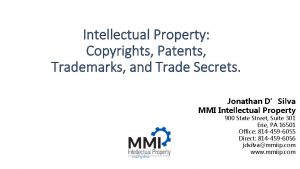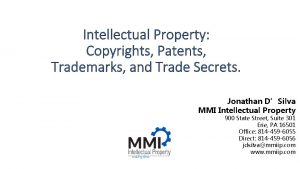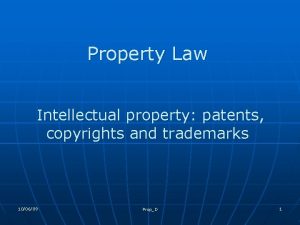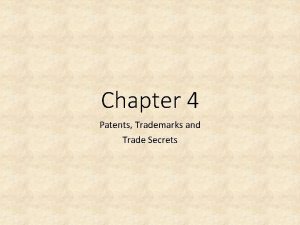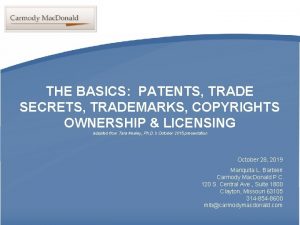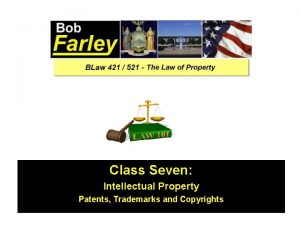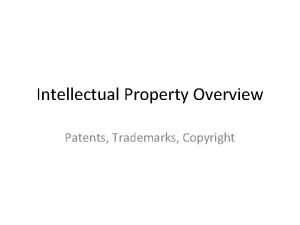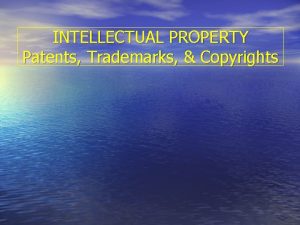Intellectual Property Copyrights Patents Trademarks and Trade Secrets













- Slides: 13

Intellectual Property: Copyrights, Patents, Trademarks, and Trade Secrets. Jonathan D’Silva MMI Intellectual Property 900 State Street, Suite 301 Erie, PA 16501 Office: 814 -459 -6055 Direct: 814 -459 -6056 jdsilva@mmiip. com www. mmiip. com

Copyright Notice Copyright © 2017 D’Silva Law Group, PLLC All Rights Reserved All materials contained herein are protected by United States copyright law and may not be reproduced, distributed, transmitted, displayed, published, or broadcast without the prior written permission of D’Silva Law Group, PLLC, d. b. a. MMI Intellectual Property. The information contained in this presentation is for informational purposes only. These materials should not be viewed or interpreted as providing legal advice. Please consult an attorney concerning your own situation. Use of this presentation or related content should not be construed as created an attorney-client relationship.

Trade Secrets

What Is A Trade Secret? • Any formula, drawing, pattern, device or compilation of information, customer lists, programs, methods, techniques, or processes • Used in business • Anything maintained in secret by a business that gives it a competitive advantage • Independent Economic Advantage to the business to keep it confidential

What Makes A Trade Secret Protectable? • Trade secret has economic value and is important in the conduct of business • The organization has taken steps to prevent disclosure of the trade secret from third parties. • Employees of the organization are under a duty or nondisclosure agreement to protect the trade secrets.

Do You Have Trade Secrets? • Yes • • Customer/Client Lists Employee Information In-House Procedures Outside Contacts Mailing Lists Passwords to your Websites, Bank Accounts, etc. Confidential Product Designs, Production Techniques, and Formulas Computer Programs

Federal and State Protection • Defend Trade Secrets Act (DTSA) and Uniform Trade Secrets Act (UTSA) • Provide Statutory Remedies for Misappropriation of Trade Secret • Damages: • Injunctive Relief • Monetary Damages - lost profits, etc • For Willful and Malicious Misappropriation • Exemplary Damages (double monetary damages) • Attorneys Fees

Factors A Court Looks At 1. The extent to which the information is known outside of the business 2. The extent to which it is known by employees and others involved in the business 3. The extent of measures taken by the business to guard the secrecy of information

Factors a Court Looks at (cont. ) 4. The value of the information to the business and to its competitors 5. The amount of effort or money expended by the business in developing the information 6. The ease or difficulty with which the information could be properly acquired or duplicated by others

Steps to Protect Trade Secrets • Identify sensitive information • Restrict access to NEED TO KNOW basis • Prepare written policies • Communicate and reinforce these policies • Label all confidential materials • Maintain a restricted access area / filing cabinet / room • Do not send confidential material to third parties without a confidentiality/non-disclosure agreement in place

Defenses to Misappropriation • Independent Creation • Permissible Reverse Engineering • Prior Use • Obtained from Third Party • Authorized • Unauthorized • Obtained from Alleger With No Obligation for Secrecy

Risks • Any collaboration that requires a transfer of information may include trade secrets or other confidential information. • Work that you require a contractor to perform may require you to disclose to them trade secrets or other confidential information. • You may come across the trade secrets or confidential information of third parties. • You could get sued.

Risks • Could be expensive to protect. • Difficult to enforce. • Easy to lose. • No ability to block independent development by others.
 Trade-related aspects of intellectual property rights
Trade-related aspects of intellectual property rights Trade secrets examples
Trade secrets examples Types of patents
Types of patents Trade secrets outline
Trade secrets outline Definition of trade secrets
Definition of trade secrets Copyrights
Copyrights Copyrights
Copyrights First sale doctrine copyright
First sale doctrine copyright Copyrights
Copyrights Copyrights
Copyrights Advantage of patent
Advantage of patent What is the copyright designs and patents act 1988
What is the copyright designs and patents act 1988 Copyright designs and patents act 1988
Copyright designs and patents act 1988 Advantages and disadvantages of patents
Advantages and disadvantages of patents

